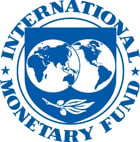
Typical street scene in Santa Ana, El Salvador. (Photo: iStock)
IMF Survey: To Help Countries Face Crisis, IMF Revamps its Lending
March 24, 2009
- IMF announces major overhaul of its lending and conditionality framework
- Includes new credit lines for strong-performing economies that need insurance
- Revamp complements IMF moves to sharply boost lending capacity
As part of moves to support countries during the global economic crisis, the IMF is beefing up its lending capacity and has approved a major overhaul of how it lends money by offering higher amounts and tailoring loan terms to countries’ varying strengths and circumstances.

Market stall in Budapest, Hungary: emerging market, developing economies face increasing difficulties from spreading global crisis (photo: Newscom)
GLOBAL ECONOMIC CRISIS
The IMF announced the creation of a new flexible credit line for countries with very strong fundamentals, policies, and track records of policy implementation. Once approved, these loans—a type of insurance policy for strong performers—can be fully disbursed when the need arises rather than being conditioned on compliance with policy targets as in traditional IMF-supported programs.
The 185-member institution also announced that it would double nonconcessional loan access limits, enhance its traditional Stand-By facility, and simplify lending terms. Complementary reforms of concessional lending instruments for low-income members are also in train.
“These reforms represent a significant change in the way the Fund can help its member countries—which is especially needed at this time of global crisis,” said IMF Managing Director Dominique Strauss-Kahn. “More flexibility in our lending along with streamlined conditionality will help us respond effectively to the various needs of all our member countries—especially emerging market and developing countries. This, in turn, will help them to weather the crisis and return to sustainable growth.”
G-20 summit
The overhaul was approved ahead of the meeting in London of the Group of Twenty (G-20) major industrialized and emerging market economies, when leaders are expected to discuss a major boost to IMF resources. A substantial increase in the IMF’s resources is required to give full confidence to countries that the Fund will have sufficient money available should they need to borrow or provide themselves with insurance.
Japan has already provided the IMF with an additional $100 billion to bolster the Fund’s lendable resources during the current crisis, and the European Union has committed €75 billion. Efforts are under way to further increase IMF resources in the runup to the April 2 summit. Before the Japanese announcement, the IMF had $250 billion to lend.
Tough times for emerging economies
Emerging market and developing countries are facing increasing difficulties around the world because of the spreading global economic crisis, with external financing drying up, exports dropping sharply, and commodity prices falling. As the crisis becomes more prolonged, a growing number of countries will find room for policy maneuver increasingly limited. Large-scale financing from the IMF can cushion the economic and social costs of these global shocks and even help avert full-blown crises if assistance is requested early on.
Global activity is now projected to contract by ½ to 1 percent in 2009 on an annual average basis—the first such fall in 60 years, the IMF has said. Global growth is still forecast to stage a modest recovery next year, conditional on comprehensive policy steps to stabilize financial conditions, sizeable fiscal support, a gradual improvement in credit conditions, a bottoming of the U.S. housing market, and the cushioning effect from sharply lower oil and other major commodity prices.
In response, the IMF is working to help countries caught up in the crisis. It has lent $50 billion so far and it must be fully prepared to assist members as needed going forward. It is also providing policy advice and assessments of actions taken to combat the crisis.
The revamp of IMF lending will enable it to help countries more nimbly as the impact of the crisis grows. One objective of the lending overhaul is to encourage countries to come to the IMF as early as possible, rather than when their problems have become intractable.
“Today’s action represents an important evolution in the Fund’s lending framework” said John Lipsky, the IMF’s First Deputy Managing Director. “We arrived at these reforms by listening to our membership, consulting with a variety of stakeholders, and reviewing past experiences. These reforms will pave the way for countries to better work with the Fund on crisis prevention and crisis resolution and complement our ongoing effort to increase significantly our overall lending resources.”
Key elements of the lending overhaul
Modernizing conditionality. The IMF aims to ensure that conditions linked to IMF loan disbursements are focused and adequately tailored to the varying strengths of members’ policies and fundamentals (there have been criticisms in the past that some IMF loans had too many conditions that were insufficiently focused on core objectives). This modernization is to be achieved by relying more on pre-set qualification criteria (ex-ante conditionality) rather than on traditional (ex post) conditionality. In addition, structural reforms will from now on be monitored in the context of program reviews, rather than through the use of structural performance criteria, which will be discontinued in all Fund arrangements, including those with low-income countries.
Flexible Credit Line (FCL). The IMF is introducing this new credit line to provide large and upfront financing to members with very strong fundamentals and policies. As access to the FCL is restricted to those members that meet strict qualification criteria, drawings under it are not tied to policy goals agreed with the country. The flexibility built into the design of the FCL relates to its uncapped access, its long repayment terms (3¼ –5 years), its unrestricted renewals, and its dual-use for contingent (precautionary) and actual balance of payments needs.
Enhancing Stand-by Arrangements (SBA). The reforms also provide flexibility in lending to countries that may not qualify for the FCL and need similar insurance. These countries can count on High Access Precautionary SBAs (HAPAs) as a regular lending window. Like the FCL, precautionary SBAs take account of country-specific circumstances and can be frontloaded based on the strength of a country’s policies and the external environment.
Doubling lending access limits. Normal access limits for countries are being doubled. The new annual and cumulative access limits to nonconcessional lending are 200 and 600 percent of quota, respectively. These higher limits give confidence to countries that adequate resources will be accessible to them to meet their financing needs. There continues to be scope for higher access under intensified scrutiny by the IMF’s Executive Board.
Simplifying cost and maturity structures. To create the right incentives for borrowing from the Fund, the cost and maturity structures for Fund lending are also being overhauled.
Simplifying lending toolkit. As part of the reforms, certain seldom-used facilities are being eliminated. They include the Supplemental Reserve Facility, the Compensatory Financing Facility, and the Short-Term Liquidity Facility—the main features of the latter are encompassed by the new FCL.
Reform of facilities for low-income countries. The Fund is also redesigning lending facilities for low-income countries to strengthen the IMF’s capacity to provide concessional short-term and emergency financing. The IMF’s objective is also to at least double its concessional lending capacity for low-income countries.
Comments on this article should be sent to imfsurvey@imf.org


